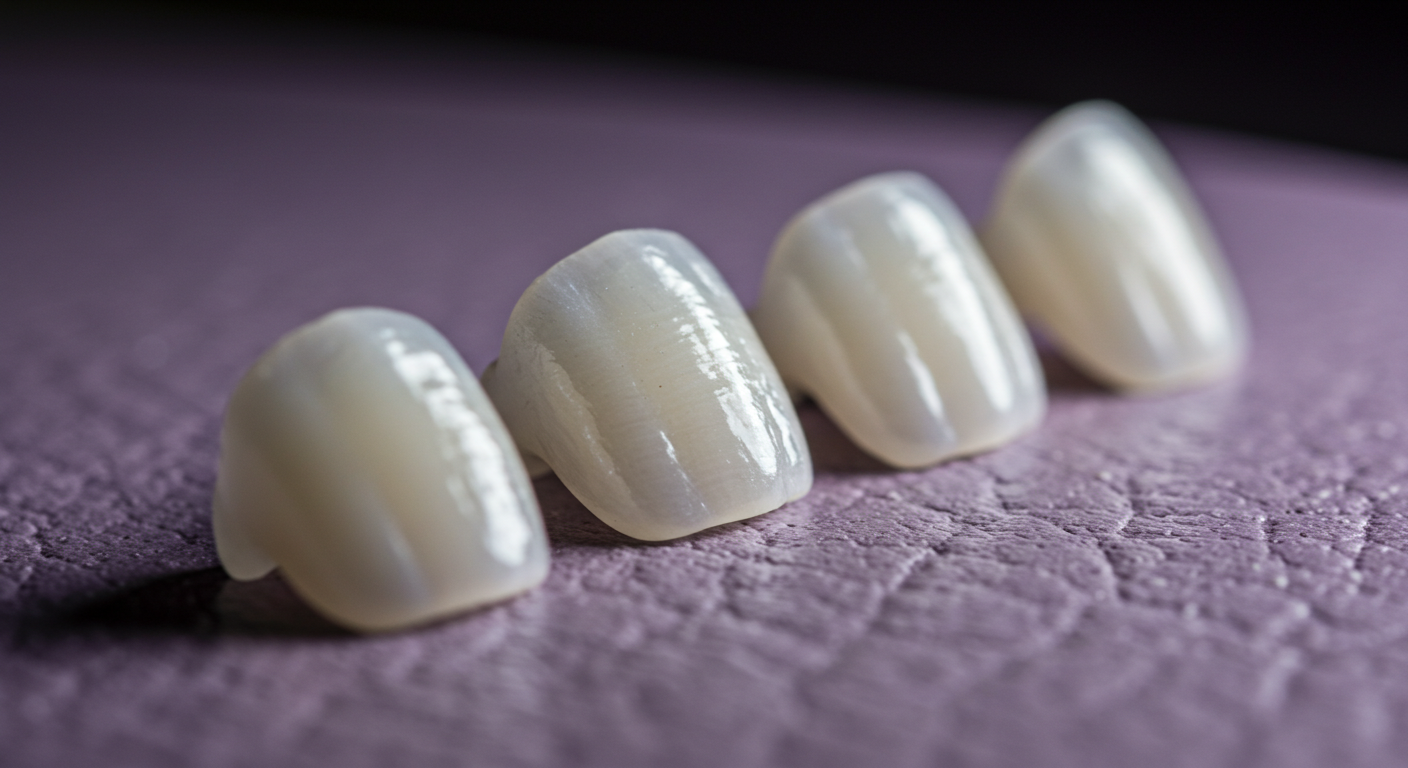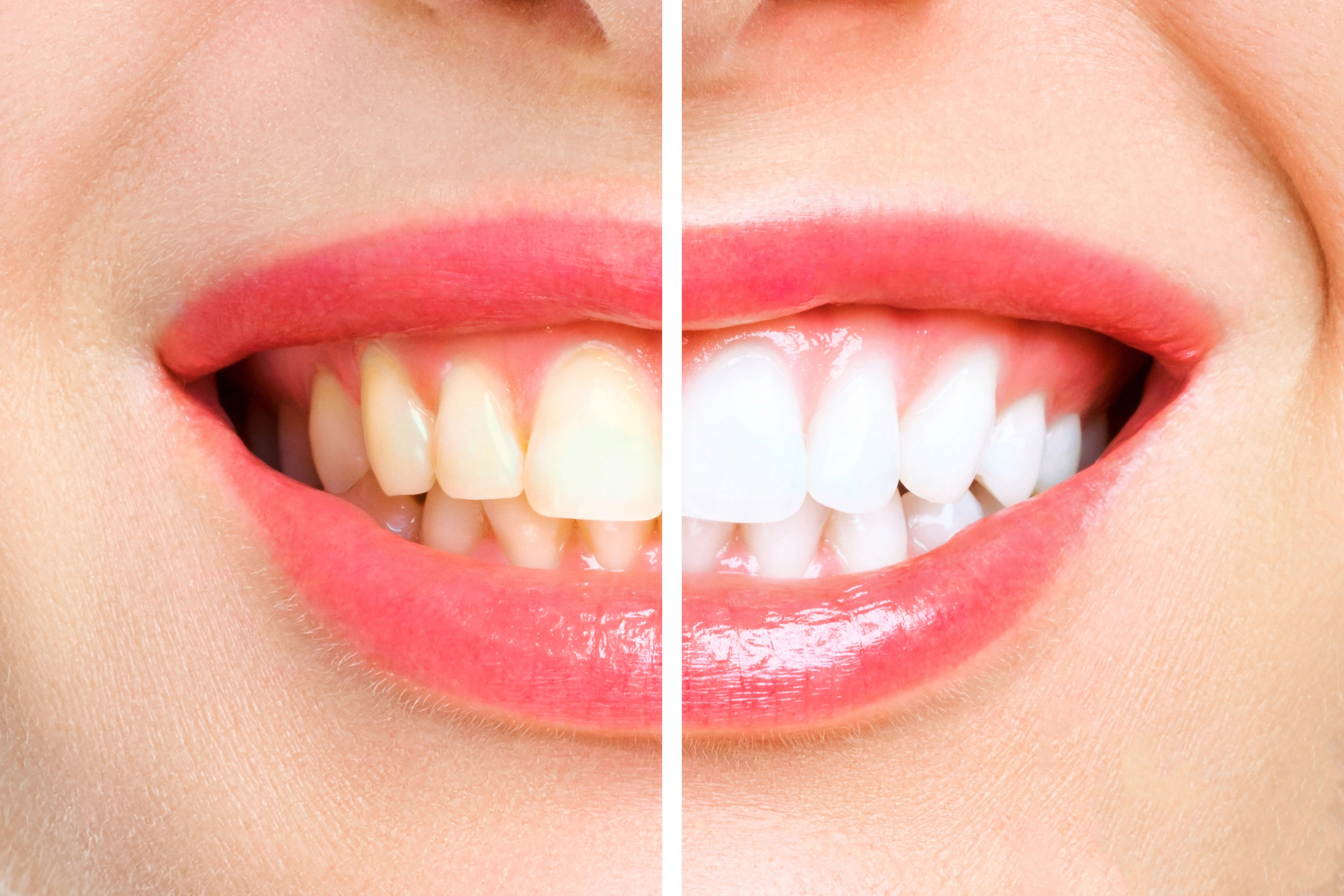Contents

Composite (Resin) Veneers: Complete 2025 Guide - Updated Costs, Procedure, Lifespan & Reviews
Dreaming of a more harmonious and brilliant smile in 2025? Composite dental veneers, often called resin veneers or dental bonding, remain a top choice in cosmetic dentistry. Known for their quick application and often less invasive approach, they effectively correct various flaws: color, shape, or minor misalignments.
But what's the current state of composite veneers? What are the updated costs in the US? Has their lifespan improved with new materials? How can you best maintain them? This detailed and updated guide answers your questions, analyzes the current pros and cons, and helps you make an informed choice.
Composite Veneers: The Essentials Today
A quick cosmetic solution (often 1 appointment) to fix color, shape, and small gaps. Average cost: $250 - $600 per tooth (variable). Less invasive than porcelain. Lifespan: 5 to 8 years on average, up to 10 with optimal care. Prone to staining (strict maintenance is crucial).
What Are Composite (or Resin) Veneers?
A composite veneer is a thin shell crafted from a biocompatible composite resin. This material combines synthetic resins with micro or nano-sized mineral filler particles (glass, quartz, ceramic), which give it its mechanical and aesthetic properties.
Its main feature is the direct technique (also known as "composite bonding"): the dentist applies and sculpts the malleable resin directly onto the tooth, usually without invasive preparation (or with minimal micro-preparation). The resin is then hardened layer by layer using a special curing light (photopolymerization).
The goal is to mask imperfections and create a new, aesthetic tooth surface that mimics the shade and translucency of the adjacent natural teeth.
What Are Composite Veneers Used For? Main Indications
The indications for resin veneers remain relevant and widely used for:
- Color Correction: To mask stains resistant to teeth whitening (intrinsic stains, aging).
- Shape Improvement: To correct chipped, worn, short, or peg-shaped teeth.
- Closing Gaps (Diastemas): To fill small to medium spaces between teeth.
- Correcting Minor Misalignments: To mask very slight rotations or overlaps (this does not replace orthodontics for significant cases).
- Cosmetic Restoration: After minor trauma or to cover old, unsightly fillings.

The Different Types of Composite Resins Used Today
While composites are constantly evolving, the most commonly used categories for cosmetic veneers remain:
- Nano-hybrid Composites: The current standard. They incorporate nanoparticles for excellent wear resistance, a durable polish, and a very good "chameleon effect" that blends with the natural tooth.
- Nanofill Composites: Primarily composed of nanoparticles, they offer the best potential for long-term polishing and shine, approaching the appearance of ceramic, with adequate mechanical strength for veneers.
- Micro-hybrid Composites: Still in use, but often considered a previous generation for high-end anterior aesthetics compared to nano-composites.
The precise choice will depend on the case, the practitioner's preference, and the search for the best aesthetic/durability compromise. Nano-composites (hybrid or filler) are the most frequent choice for optimal results.
How Are Composite Veneers Placed? The Key Steps
The procedure, usually completed in a single appointment, follows these steps:
- Consultation and Planning (Crucial Phase): Full exam, discussion of expectations, photographs. The use of Digital Smile Design (DSD) is increasingly common to preview the result. Precise shade selection is performed.
- Minimal Tooth Preparation: The principle is maximum enamel preservation. Often, no drilling is needed. Sometimes, a superficial micro-abrasion enhances adhesion. The tooth is rigorously isolated (e.g., with a rubber dam).
- Bonding: The enamel is etched (with a mild acid gel) and a high-performance adhesive system is applied and light-cured.
- Layering and Sculpting the Composite: The resin is applied in thin successive layers (stratification). The dentist uses different shades and opacities to mimic the natural tooth structure. The material is precisely sculpted for shape and texture.
- Curing: Each layer is hardened individually (20-40 sec) with a high-performance LED light.
- Finishing and Polishing: Final adjustments to the shape and bite. A multi-step polishing process (discs, cups, diamond pastes) is used to achieve an ultra-smooth, high-gloss surface, which is essential for aesthetics and stain resistance.
- Final Check and Instructions: Aesthetic and functional check, followed by care instructions.
Maintenance and Cleaning: Maximizing the Lifespan of Your Composite Veneers
Rigorous care is more essential than ever to preserve the aesthetics and longevity of your resin veneers:
- Impeccable Oral Hygiene: Brush at least twice a day (soft brush, low-abrasion toothpaste—avoid harsh "whitening" formulas), and use floss or interdental brushes daily.
- Dietary Control: Minimize highly staining foods (coffee, tea, red wine, turmeric, berries). Rinse thoroughly with water after consumption.
- Avoid Bad Habits:Smoking is strongly discouraged (a major cause of staining). Do not bite nails/pens or open objects with your teeth.
- Chewing Caution: Do not bite directly into very hard foods (ice, hard candies, whole nuts). Cut up tough foods like apples or crusty bread.
- Night Guard:Essential if you grind your teeth (bruxism), even slightly, to prevent wear and fractures.
- Professional Check-ups and Polishing: This is key! An annual check-up (or every 6 months if recommended) with professional polishing is crucial to remove surface stains, maintain shine, and check the integrity of the veneers.
Pros and Cons of Composite Veneers (An Updated Look)
Advantages:
- Controlled Cost: Still significantly more affordable than porcelain veneers.
- Maximum Tooth Preservation: The least invasive technique for enamel.
- Speed: Aesthetic result often achieved in a single appointment.
- Repairable: Small chips can often be easily repaired in the mouth.
- Improved Aesthetics: Modern composites allow for very natural results.
- Reversibility (in theory): If no initial drilling was done, removal is possible (though it requires a dental procedure).
Disadvantages:
- Limited Lifespan: Average of 5-8 years (vs. 10-15+ for porcelain).
- Lower Mechanical Strength: More susceptible to wear and fractures than porcelain.
- Susceptibility to Stains: This is the main weakness. The material is porous and requires strict maintenance and polishing to maintain its color.
- Shine Stability: The initial gloss can dull over time, requiring re-polishing.
- Operator-Dependent: The aesthetic result heavily depends on the skill and artistry of the dentist.
Quick Comparison: Composite vs. Porcelain Veneers
| Feature | Composite Veneers (Resin) | Porcelain Veneers |
|---|---|---|
| Cost | $$ (More affordable) | $$$$ (More expensive) |
| Avg. Lifespan | 5 - 8 years | 10 - 15+ years |
| Strength | Moderate | High |
| Stain Resistance | Moderate (can stain) | Excellent |
| Invasiveness | Minimal / None | Moderate preparation |
| Appointments | 1 (usually) | 2+ (with lab) |
| Repairability | Easy (often direct) | Difficult (replacement) |
| Shine Retention | Requires regular polishing | Durable |
What is the Real Lifespan of Composite Veneers?
The average lifespan remains stable at around 5 to 8 years. Reaching or exceeding 10 years is possible but requires optimal conditions:
- High-quality nano-composite material and a flawless placement technique.
- Exemplary oral hygiene and a controlled diet (low in staining agents).
- Absence of parafunctional habits (bruxism, nail-biting...).
- Regular professional polishing (at least annually) to maintain the surface and stain resistance.
Without this rigorous maintenance, aesthetic (stains, loss of shine) or mechanical degradation may occur sooner.
What is the Updated Cost of Composite Veneers in the US (2025)?
In 2025, the average cost of a composite veneer in the United States typically ranges from $250 to $600 per tooth. In major metropolitan areas with top cosmetic dentists, this price can exceed $1,000 per tooth.
This fee is an estimate and fluctuates based on:
- The practitioner's fees (experience in cosmetics, location).
- The complexity of the case (time spent, technical difficulty).
- The specific type of nano-composite used.
- The number of veneers being placed.
Insurance and Quotes
Veneers placed for purely cosmetic reasons are almost never covered by dental insurance. Check your plan for any potential benefits, but expect to pay out-of-pocket. A detailed and precise quote is essential before starting treatment.
Who Is a Good Candidate for Composite Veneers?
The ideal candidate is someone seeking a quick, conservative, and moderately priced cosmetic improvement for mild to moderate flaws, and who is motivated to maintain them rigorously.
- Healthy teeth, good hygiene, no active gum disease.
- Realistic expectations about durability and color stability.
- Willing to commit to regular check-ups and professional polishing.
- Absence of untreated severe bruxism.
Have an open discussion with your dentist to confirm that this is the best option for your specific case.

Conclusion: Are Composite Veneers a Smart Choice?
Yes, composite (resin) veneers remain an excellent option for many patients wishing to improve their smile in a conservative and relatively quick manner. Advances in nano-composite materials offer increasingly natural aesthetic results.
Their main appeal lies in enamel preservation and a more accessible price (approx. $250 - $600/tooth in 2025) compared to porcelain. However, their average lifespan of 5-8 years and their susceptibility to staining demand rigorous maintenance discipline and regular professional polishing to maintain the result. The lack of insurance coverage is also a key factor.
Long-term success will depend on the quality of the initial work, your commitment to maintenance, and a proper initial indication. An in-depth consultation with a skilled dentist is the essential first step.
Frequently Asked Questions (FAQ)
Q: Can composite veneers be whitened?
A: No, they cannot. Whitening treatments only lighten natural enamel. If you want a whiter smile, do it before getting veneers.
Q: Is drilling the tooth always necessary?
A: No, the approach is minimalistic. Often no drilling is needed, and at most, a light surface preparation.
Q: Do composite veneers still stain easily?
A: Yes, this is their main weakness compared to porcelain. Nano-composites are slightly more resistant, but maintenance and polishing remain CRUCIAL.
Q: How are composite veneers removed?
A: Only by a dentist, using specific instruments to carefully remove the resin while preserving the underlying enamel.
Q: Can composite veneers be placed on crowns or implants?
A: No, they are designed to bond to natural tooth enamel/dentin.
Q: Can they fix very crooked teeth?
A: No, they are only for minor imperfections. Orthodontics (like braces or clear aligners) is the solution for significant misalignments.
